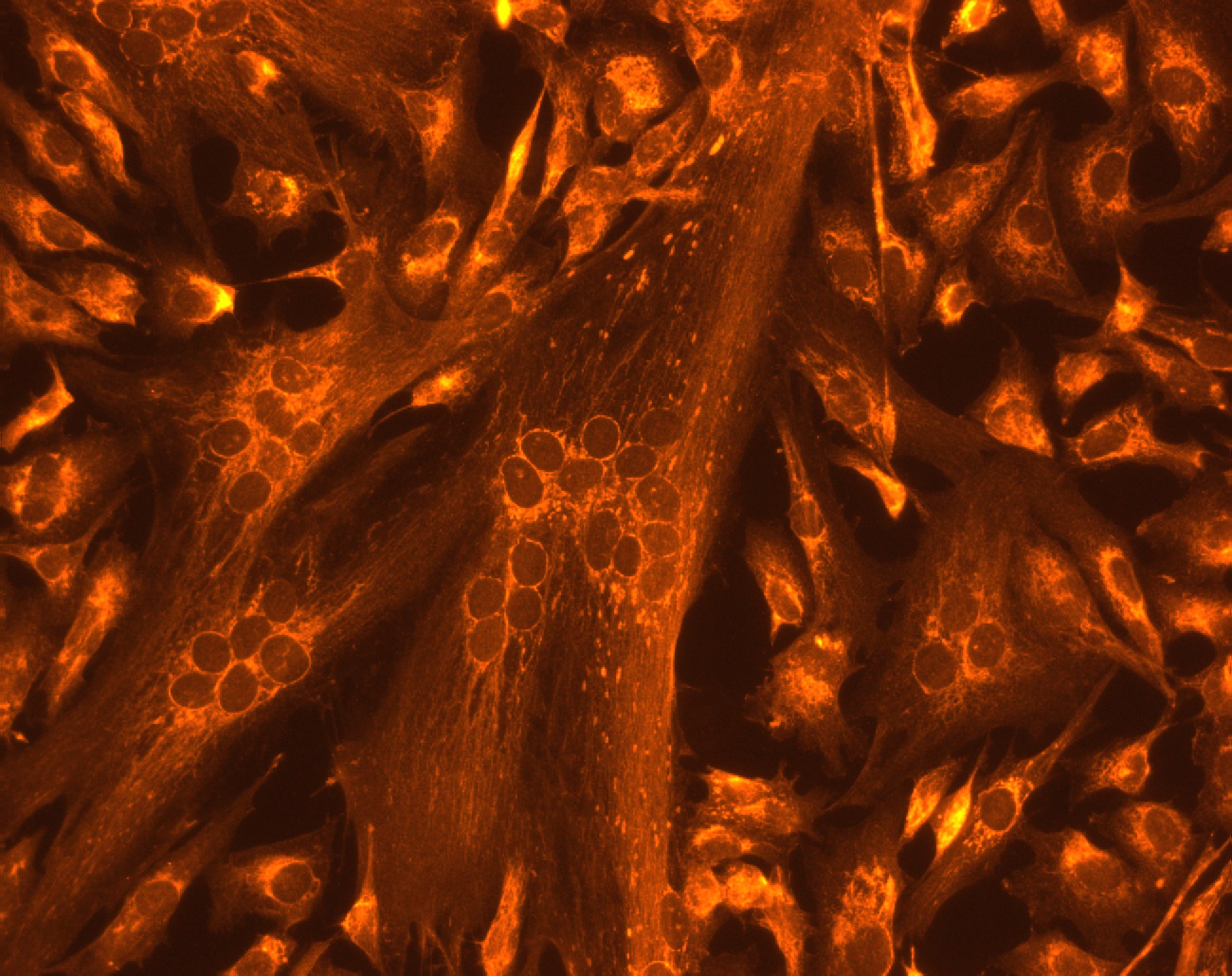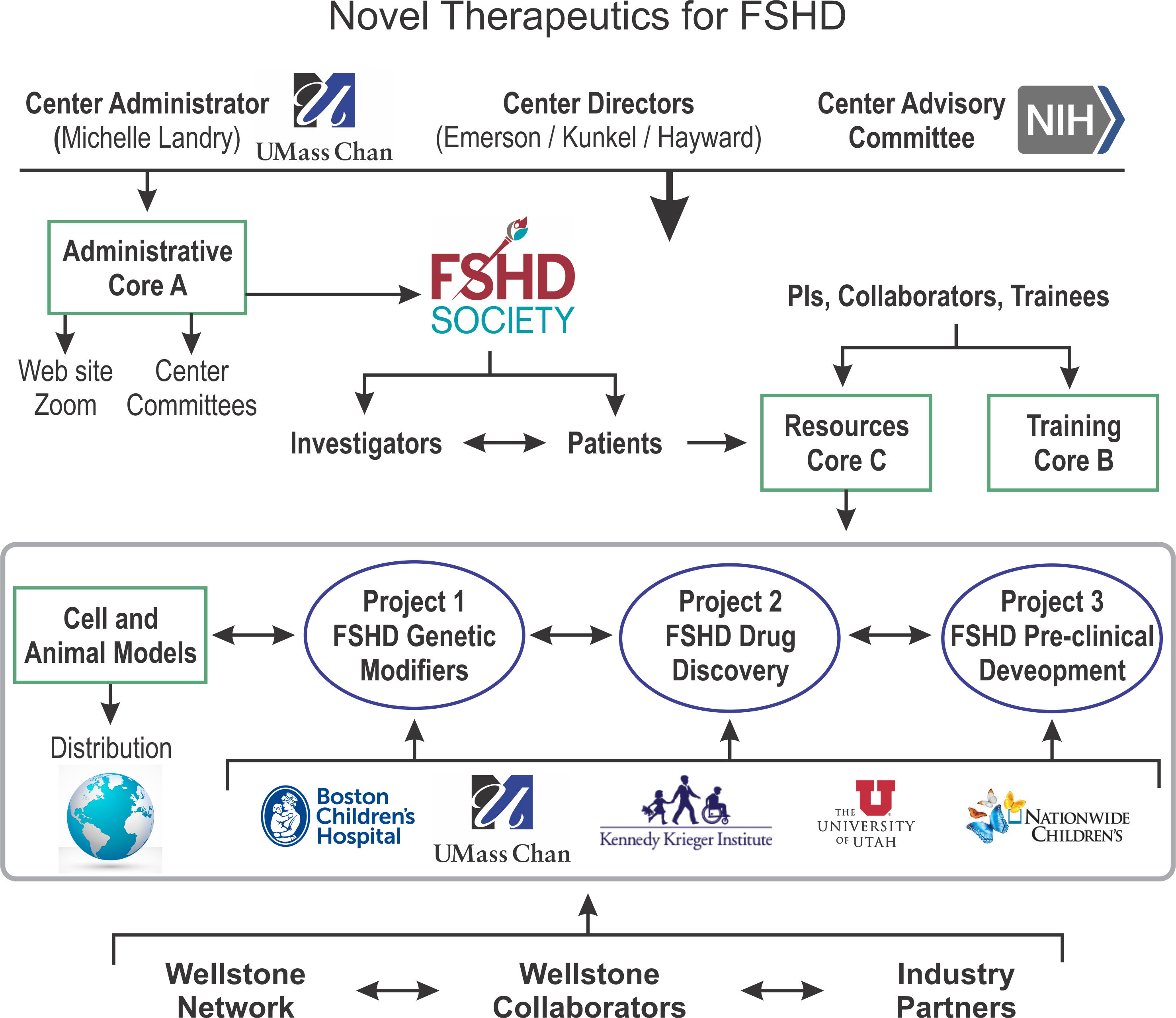Overview

Introduction to Wellstone MDCRC
The UMass Chan Wellstone Center uniquely focuses its research and training programs on Facioscapulohumeral Muscular Dystrophy (FSHD), one of the most prevalent myopathies, afflicting both children and adults. The mission of the UMass Chan Wellstone Center is to research the underlying genetic and epigenetic mechanisms driving the muscle pathology of FSHD, leading to the development of novel therapeutics for this devastating disease.
Wellstone Center Goals
The UMass Chan Wellstone Center is a distributed center with an exceptional team of collaborative investigators whose research and training programs focus on FSHD, one of the most prevalent muscular dystrophies, afflicting both children and adults. Despite the lifelong severe disability of this disease, there are no accepted pharmacologic treatments. However, research developments by our Center and others over the past ten years have made significant progress toward understanding the molecular pathology of FSHD cell and animal models suitable for preclinical drug development and testing. Our research has identified novel druggable targets and therapeutic interventions that our Center will expand and pursue towards the goal of clinical trial evaluation of multiple FSHD therapeutics.
The overarching goal of the Center's three research projects, resources core, and administrative and training cores are to meet a current critical need in the field of FSHD, which is the development of innovative therapies. We are addressing this need through three highly synergistic and collaborative projects directed toward target identification and drug discovery and optimization, enhanced by industry and academic collaborations.
Center goals are:
-
-
identifying FSHD disease modifiers through expanded genomic investigations of families with members who have identical genetic disease, but highly disparate clinical severity of disease. Project 1 undertakes to discern native gene variants and regulatory pathways that influence the FSHD clinical phenotype through genomic approaches;
-
discovering gene and physiological modulators of DUX4 toxicity. Project 2 utilizes novel Wellstone Center cell and animal models of FSHD together with CRISPR-based gene-targeting approaches to identify gene and regulatory pathway therapeutic targets;
-
optimizing our lead DUX4 RNA therapeutics and DUX4 signaling compounds. Project 3 pursues pre-clinical studies to validate lead compounds towards clinical trials using our novel xenograft and animal models;
-
partnering with FSHD patient advocacy groups, including continued interactions with the FSHD Society and FSHD Global, to support and participate in FSHD research and clinical trials;
-
expanding collaborations with industry and academic partners who have tools and experience to develop FSHD therapeutics;
-
training the next generation of clinician-scientists and translational researchers, who will be the driving force of our Wellstone therapeutic development program.
-
Wellstone Center Research Accomplishments
Over the past five years, our Wellstone Center has pursued highly collaborative projects on the theme of “Biomarkers of FSHD for Therapeutics,” and established an FSHD Muscle Stem Cell Repository as a national and international resource.
Highlights of our accomplishments include:
- Establishment of an FSHD Biorepository of muscle stem cells and muscle biopsies from 36 families with affected and unaffected family members.
- Identification of FSHD families with members who are genetic carriers of FSHD.
- Transcriptome studies to establish a myostatin inhibition biomarker signature in mouse model studies as a pre-clinical foundation for clinical trials with anti-myostatin drugs.
- Statistically-powered transcriptome studies of FSHD muscle and stem cells to identify a unique FSHD disease biomarker signature.
- Establishment of cell models for pre-clinical FSHD therapeutic development.
- Establishment of novel humanized xenograft mouse models and a zebrafish model for pre-clinical FSHD therapeutic development.
Wellstone Center Leadership and Administration
The Center brings together a strong multidisciplinary team of talented and experienced clinician scientists, researchers and collaborators with expertise in FSHD and muscular dystrophy, partnering with biotech industry leaders with expertise in therapeutic development for muscular dystrophy and with patient advocacy leaders dedicated to the furthering of FSHD research towards therapies. The collaborative spirit and accomplishments of the Center and its investigators are highlighted by our publications over the past 5 years (see below). The Director and Co-Directors, Drs. Charles Emerson, Louis Kunkel, and Lawrence Hayward lead our team. They are accomplished researchers and clinical scientists in muscle biology and disease and are experienced in the leadership of collaborative, multidisciplinary research teams and training programs.
Organizational Chart of the UMass Chan Wellstone Center
